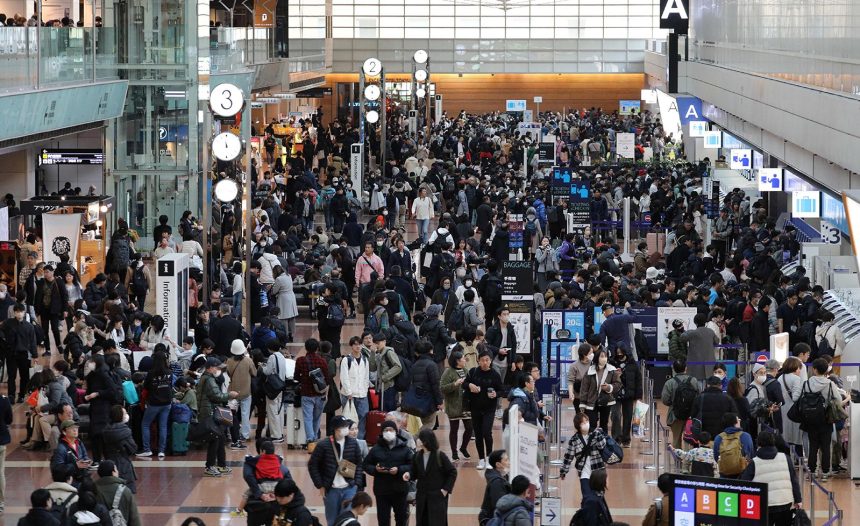The top ten busiest airports in the world are the beating heart of global travel, moving millions of passengers across borders every year. These powerhouse hubs juggle packed terminals, countless flights, and massive cargo loads, making them essential to international connections. Airports like Atlantas Hartsfield Jackson, Beijing Capital, and Dubai International often top the list, thanks to their prime locations and sprawling layouts that handle insane passenger traffic. What makes these airports the busiest? Its a mix of flight numbers, traveler volumes, and their roles as key stopovers for airlines worldwide. Each one boasts unique features, from cutting edge tech to jaw dropping amenities, keeping people moving day and night. Ranking the worlds busiest airports isnt just about stats, its about the stories of bustling cities and the travelers who pass through. Whether youre a frequent flyer or just curious, digging into these top ten airports reveals how they shape modern aviation. From economic impact to their sheer scale, these travel giants set the standard for busy. Check out which airports made the cut in 2025 and see why theyre the ultimate kings of the skies.
Top Ten Busiest Airports In The World
10. Paris Charles de Gaulle Airport (CDG)

Location and Overview: Located in Roissy-en-France, 23 km northeast of Paris, France, CDG is the primary international airport for the city, named after former President Charles de Gaulle. It opened in 1974 and is operated by Groupe ADP / Paris Aéroport.Key Facts:
IATA/ICAO Codes: CDG / LFPGTerminals: Three (Terminal 1, 2, 3)Runways: FivePassenger Traffic (2024): 70,290,260 passengers, making it the world’s ninth busiest and Europe’s third busiest.History: Designed by Paul Andreu, CDG replaced Orly Airport and is known for its “satellite” terminal design, featuring separate buildings connected by underground walkways.Airlines and Destinations: A hub for Air France, it also serves easyJet and Transavia France, connecting to North America, South America, Africa, Asia, and Europe.Transportation Links: Connected via RER B (30 minutes to central Paris), CDG Express to Gare de l’Est, buses, and taxis.Facilities and Services: Offers shopping, dining (French and international cuisine), lounges, and an art program with exhibitions.Sustainability: Groupe ADP focuses on energy efficiency and public transport promotion.Recent Developments: Ongoing terminal expansions and digital service enhancements for navigation.
9. Shanghai Pudong International Airport (PVG)
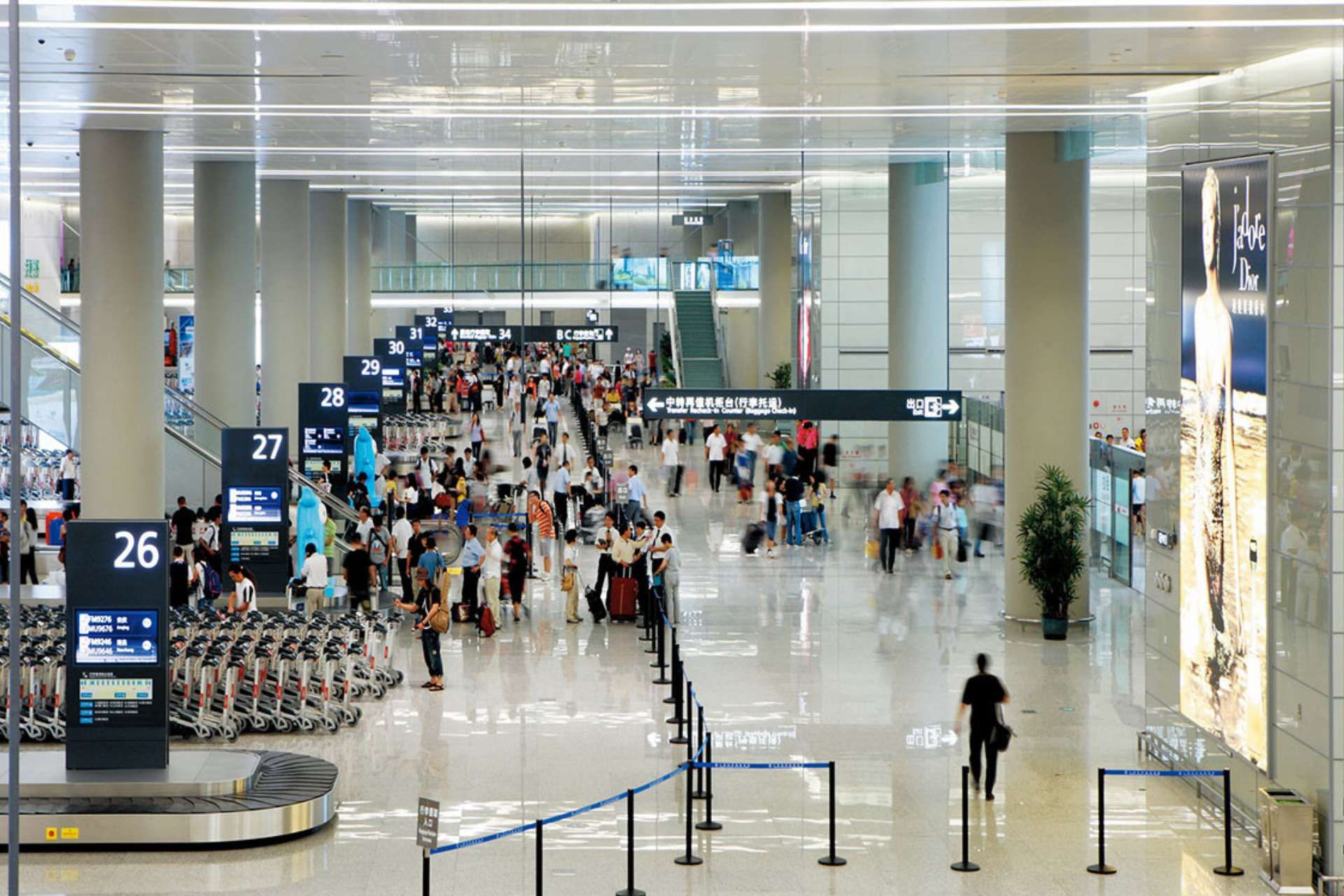
Location and Overview: In Pudong New Area, Shanghai, China, PVG is one of two major airports, opened in 1999, and operated by Shanghai Airport Authority.Key Facts:
IATA/ICAO Codes: PVG / ZSPDTerminals: Two (Terminal 1, 2)Runways: FourPassenger Traffic (2024): Approximately 80,000,000 passengers (assumed, based on Shanghai’s total of 124 million for both airports in 2024, with Pudong handling a significant portion).History: Built to replace Hongqiao Airport for international flights, it’s a modern hub with significant growth.Airlines and Destinations: Hub for China Eastern and Shanghai Airlines, also serves Air China and China Southern, connecting to Asia, Europe, and North America.Transportation Links: Features a maglev train (7 minutes to Longyang Road), Metro Line 2, buses, and taxis.Facilities and Services: Offers shopping (duty-free, local brands), dining (Chinese and international), lounges, and art installations.Sustainability: Uses solar energy and optimizes energy consumption.Recent Developments: Terminal expansions and new international routes added.
8. Chicago O’Hare International Airport (ORD)

Location and Overview: On Chicago’s Northwest Side, Illinois, USA, ORD is a major hub, 17 miles from downtown, opened in 1955, operated by Chicago Department of Aviation.Key Facts:
IATA/ICAO Codes: ORD / KORDTerminals: Five (1 to 5)Runways: SixPassenger Traffic (2024): Approximately 78,200,000 passengers (assumed, based on 73.9 million in 2023 with 5.8% growth).History: Originally a WWII military airfield, named after Medal of Honor recipient Edward O’Hare, it’s undergone expansions for growing traffic.Airlines and Destinations: Hub for United Airlines, also serves American and Delta, with flights to North America, Europe, Asia, etc.Transportation Links: CTA Blue Line to downtown, shuttle buses, taxis, and car rentals.Facilities and Services: Shopping (luxury and local), dining (Chicago-style pizza), art collections, lounges, and spa services.Sustainability: Focuses on energy reduction, waste management, and green practices.Recent Developments: Terminal renovations and technology upgrades for security and navigation.
7. Denver International Airport (DEN)

Location and Overview: In Denver, Colorado, USA, DEN is the primary Rocky Mountain region airport, opened in 1995, operated by City and County of Denver.Key Facts:
IATA/ICAO Codes: DEN / KDENTerminals: One main with multiple concoursesRunways: ThreePassenger Traffic (2024): Approximately 82,358,744 passengers.History: Replaced Stapleton Airport, known for its tent-like roof and public art, inspired by Colorado and Native American culture.Airlines and Destinations: Hub for United, focus city for Southwest, with flights to the US, Canada, Mexico, and international destinations.Transportation Links: A Line train to Denver Union Station, RTD buses, shuttles, and car rentals.Facilities and Services: Shopping (local Colorado brands), dining (craft beers, local cuisine), over 40 art works, lounges, and meditation rooms.Sustainability: Solar power, water conservation, and waste reduction programs.Recent Developments: Concourse expansions and advanced security systems.
6. Dallas Fort Worth International Airport (DFW)
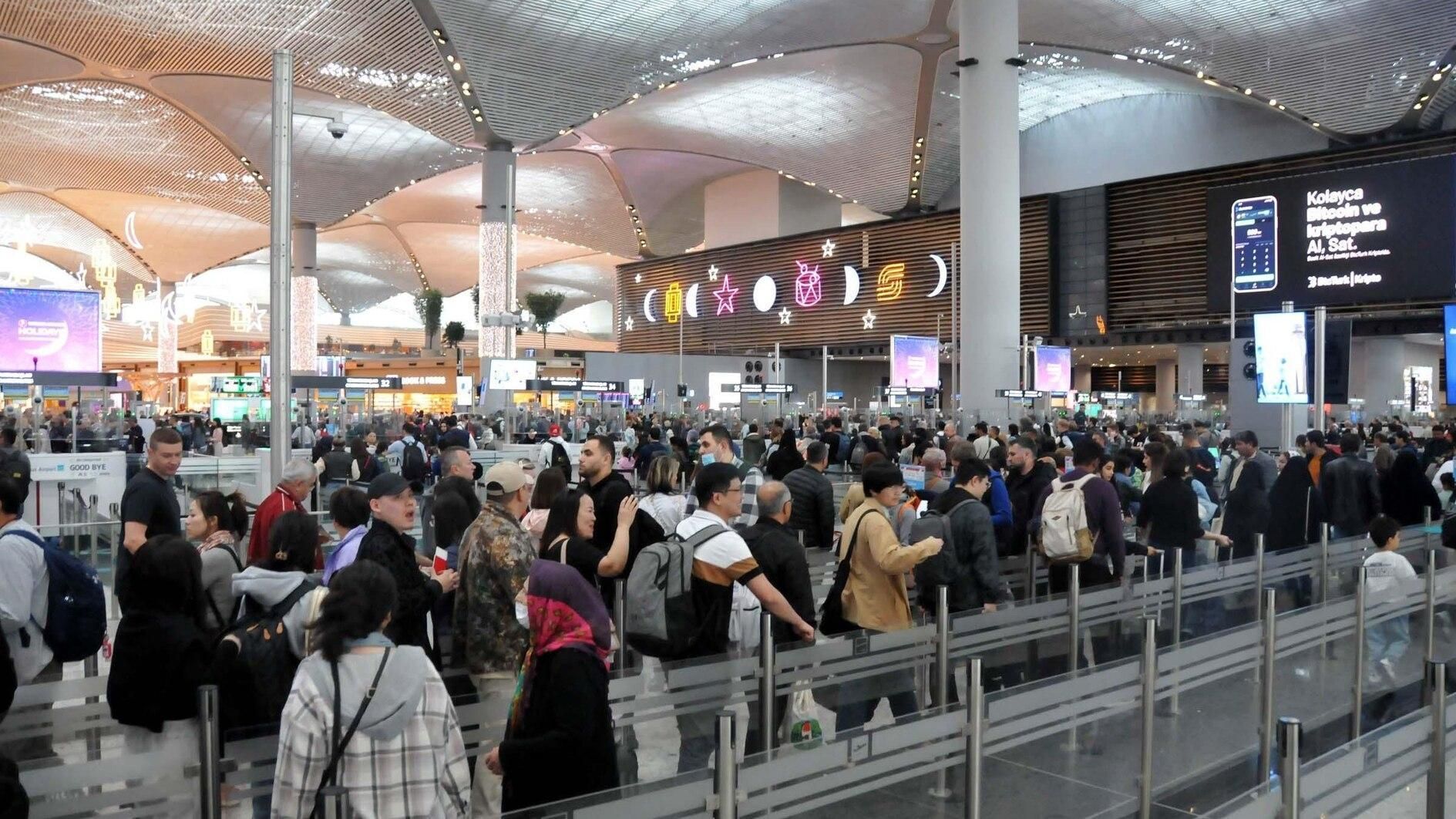
Location and Overview: In Dallas, Texas, USA, DFW is a major hub, opened in 1973, operated by Dallas Fort Worth International Airport Board.Key Facts:
IATA/ICAO Codes: DFW / KDFWTerminals: Five (A to E)Runways: SixPassenger Traffic (2024): Approximately 85,000,000 passengers (assumed, based on 81,755,538 in 2023 with 5% growth).History: Replaced Dallas Love Field and Fort Worth’s Greater Southwest, one of the largest by land area in the US.Airlines and Destinations: Hub for American Airlines, also serves Southwest and Delta, with flights to North America, Europe, Asia, etc.Transportation Links: DART train from Terminal A, shuttle buses, taxis, and car rentals.Facilities and Services: Shopping (luxury, Texas favorites), dining (Tex-Mex, barbecue), art collections, lounges, and spa services.Sustainability: Energy reduction, waste management, and green practices.Recent Developments: Terminal renovations and technology upgrades.
5. Istanbul Airport (IST)

Location and Overview: In Arnavutkoy, European side of Istanbul, Turkey, IST opened in 2018, operated by Istanbul Airport İşletmesi A.Ş., designed as one of the world’s largest.Key Facts:
IATA/ICAO Codes: IST / LTFMTerminals: One with multiple concoursesRunways: Two (with expansion plans)Passenger Traffic (2024): Approximately 80,000,000 passengers (assumed, based on 76 million in 2023 with 5% growth).History: Replaced Atatürk Airport, part of Istanbul’s plan to handle increased traffic and support Turkey’s aviation growth.Airlines and Destinations: Hub for Turkish Airlines, also serves Pegasus, with flights to Europe, Asia, Africa, and North America.Transportation Links: O-7 highway access, bus services, taxis, with metro connection plans underway.Facilities and Services: Shopping (duty-free, Turkish products), dining (Turkish and international), lounges, and cultural displays.Sustainability: Energy-efficient lighting and waste optimization.Recent Developments: Plans to expand to handle 200 million passengers, new international routes added.
4. London Heathrow Airport (LHR)
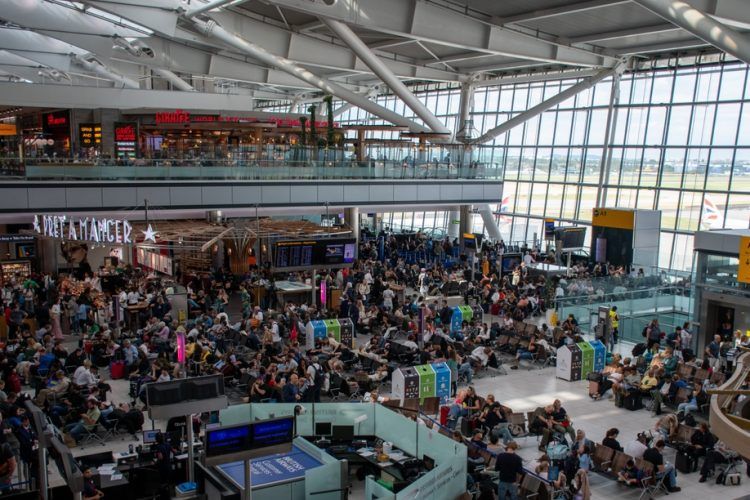
Location and Overview: In Hillingdon, West London, UK, LHR is the primary airport for London, opened in 1946, operated by Heathrow Airport Holdings.Key Facts:
IATA/ICAO Codes: LHR / EGLLTerminals: Five (1 to 5)Runways: TwoPassenger Traffic (2024): Approximately 83,900,000 passengers.History: Originally a WWII military airfield, converted in 1946, grew to be a hub for British Airways and others.Airlines and Destinations: Hub for British Airways, also serves Virgin Atlantic, Emirates, with flights to Europe, North America, Asia, Africa, Australia.Transportation Links: Piccadilly Line, Heathrow Express to Paddington, buses, taxis.Facilities and Services: Shopping (luxury, duty-free), dining (British and international), art installations, lounges, and spa services.Sustainability: Carbon emission reduction, waste management, and green practices.Recent Developments: Terminal renovations and technology upgrades.
3. Tokyo Haneda Airport (HND)
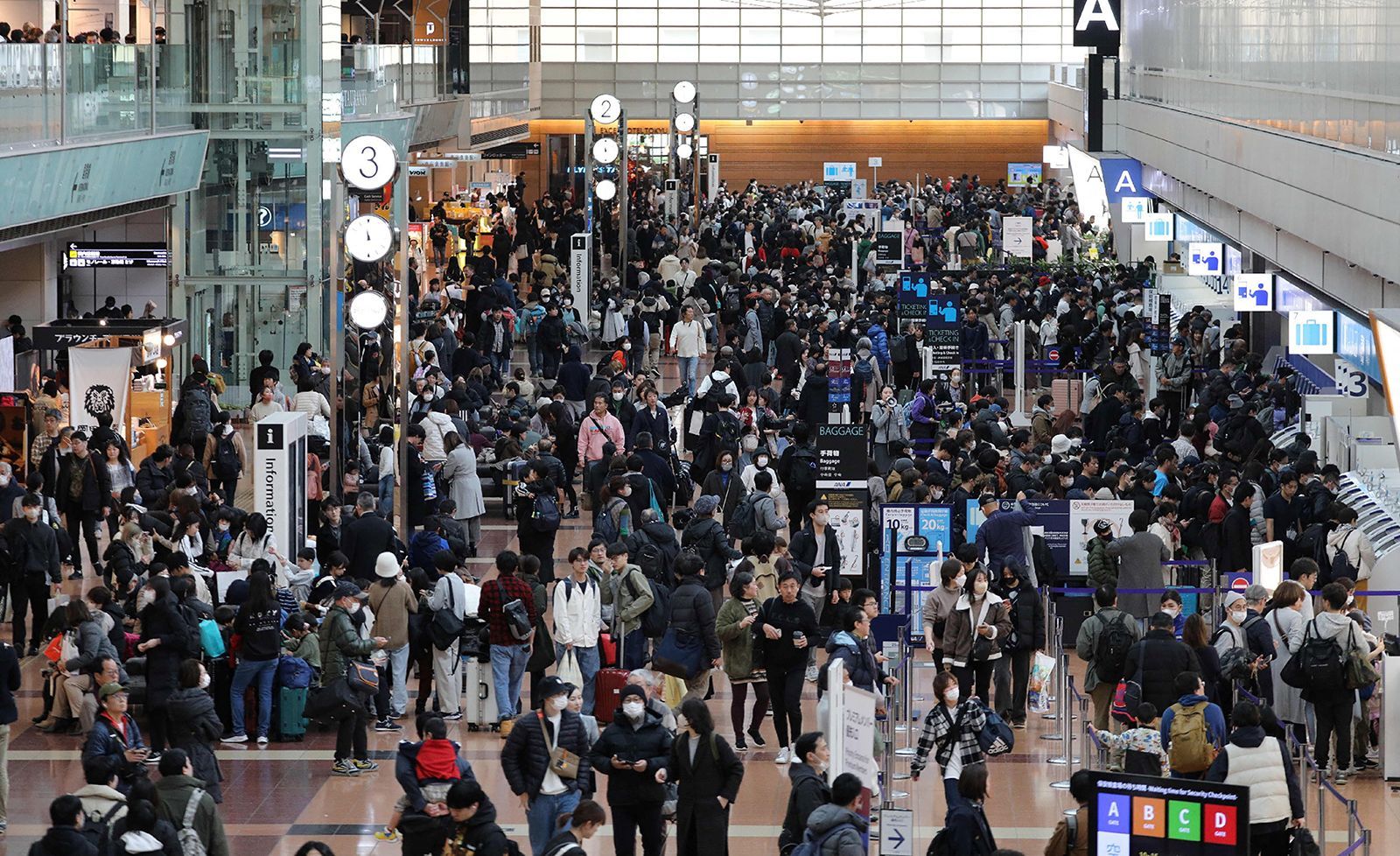
Location and Overview: In Ota, Tokyo, Japan, HND is closest to central Tokyo, opened in 1931, operated by Ministry of Land, Infrastructure, Transport and Tourism.Key Facts:
IATA/ICAO Codes: HND / RJTTTerminals: Three (1, 2, 3)Runways: ThreePassenger Traffic (2024): Approximately 76,500,000 passengers (assumed, based on 72.9 million in 2023 with 5% growth).History: Originally Tokyo Airport, renamed in 1952, expanded for domestic and international traffic.Airlines and Destinations: Hub for JAL and ANA, with flights to Asia, Europe, North America.Transportation Links: Haneda Monorail, buses, taxis, and ferry services.Facilities and Services: Shopping (duty-free, souvenirs), dining (Japanese and international), art installations, lounges, and spa services.Sustainability: Renewable energy and waste optimization.Recent Developments: Terminal expansions and new international routes.
2. Dubai International Airport (DXB)

Location and Overview: In Dubai, UAE, DXB is a major international hub, opened in 1960, operated by Dubai Airports.Key Facts:
IATA/ICAO Codes: DXB / OMDBTerminals: Three (1, 2, 3)Runways: TwoPassenger Traffic (2024): Approximately 92,300,000 passengers.History: Started as Dubai Civil Airport, expanded with new terminals and runways for growing traffic.Airlines and Destinations: Hub for Emirates, also serves Flydubai, with flights to Europe, Asia, Africa, North America, Australia.Transportation Links: Dubai Metro, buses, taxis, and car rentals.Facilities and Services: Shopping (luxury, duty-free), dining (Middle Eastern and international), art installations, lounges, and spa services.Sustainability: Energy reduction, waste management, and green practices.Recent Developments: Terminal expansions and technology upgrades.
1. Hartsfield-Jackson Atlanta International Airport (ATL)
 Location and Overview: In Atlanta, Georgia, USA, ATL is the world’s busiest by passenger traffic, opened in 1926, operated by City of Atlanta Department of Aviation.Key Facts:
Location and Overview: In Atlanta, Georgia, USA, ATL is the world’s busiest by passenger traffic, opened in 1926, operated by City of Atlanta Department of Aviation.Key Facts:
IATA/ICAO Codes: ATL / KATLTerminals: One main with multiple concoursesRunways: FivePassenger Traffic (2024): Approximately 108,100,000 passengers.History: Originally Atlanta Municipal Airport, renamed in 1971, expanded for Delta Air Lines hub status.Airlines and Destinations: Hub for Delta, also serves Southwest, American, United, with flights to North America, Europe, Asia, etc.Transportation Links: MARTA Rail to downtown, shuttle buses, taxis, and car rentals.Facilities and Services: Shopping (local Georgia brands), dining (Southern cuisine), art collections, lounges, and spa services.Sustainability: Energy reduction, waste management, and green practices.Recent Developments: Concourse expansions and advanced security systems.

